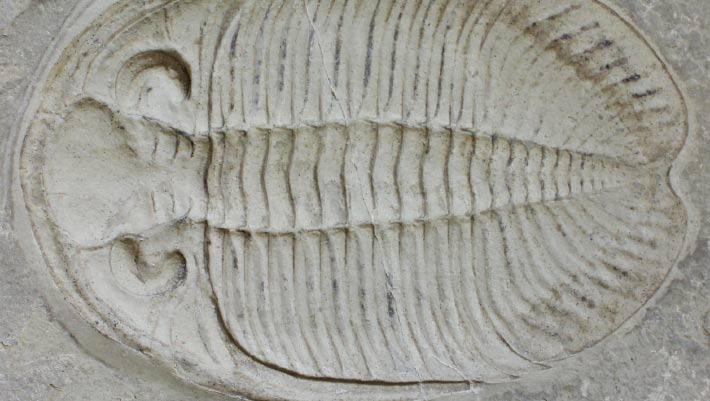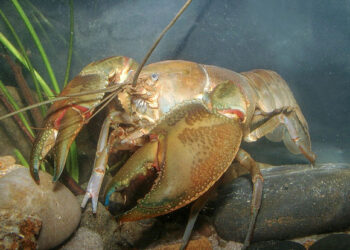A newly-described genus and species of trilobite is a unique example of an animal changing the form and apparent function of one of its morphological features to overcome a problem, while modifying the form and function of another feature to satisfy the function of the original feature.
The trilobite, Waukeshaaspis eatonae, is from the marine strata of the Silurian (437 ma) Waukesha Biota of Wisconsin.
It is the only trilobite abundantly found in this biota, which is known mainly for the diversity and exceptional preservation of its arthropods and worm-like animals.
Researchers Dr. Enrique Alberto Randolfe and Kenneth C. Gass described this trilobite in their new paper in the Journal of Paleontology.
The family containing this trilobite typically bears a pair of spines (genal spines) — one on either side (left and right) of the head shield (cephalon).
It normally also has a tail region (pygidium) that comes to a point in the back and is usually extended to form a medial spine (caudal spine) that can be quite long and probably helped overturn the animal when necessary.
In contrast, the pygidium of Waukeshaaspis lacks a caudal spine, bearing an indentation (embayment) in its place, which is very uncommon in the Silurian members of this family.
While the embayment would thus not serve to overturn the animal, it might have enhanced respiration while the animal was in an enrolled posture, by maintaining an opening through which water could flow to the trilobite’s gills.
A further distinction is this species’ exceptionally long genal spines, which reach as far back as the pygidium. These could have served well to overturn the animal.
Other features of Waukeshaaspis eatonae worth noting include the significant clustering of individuals, in one case including up to 49 partial or complete exoskeletons, likely due to physiological tolerance at the habitation site and sorting at the preservation site, and the preservation of gastrointestinal (gut) tracts, which…
Read the full article here





